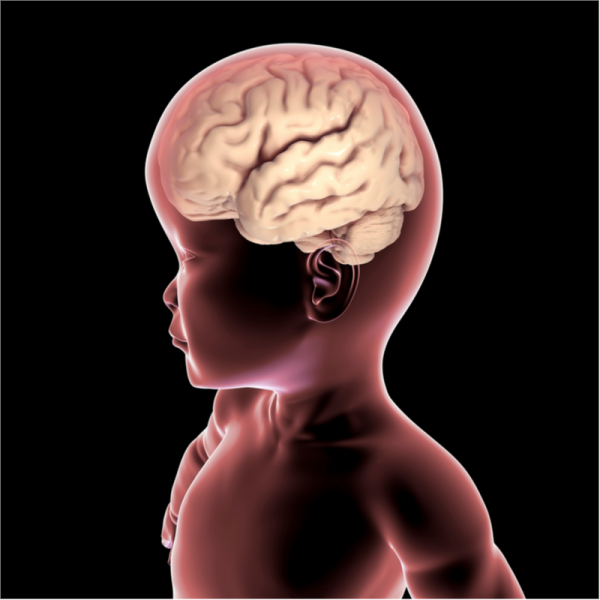
What is Gorlin's syndrome?
Gorlin's syndrome is also called basal cell nevus syndrome and can lead to malignant skin tumours, so-called basal cell carcinomas, or malignant brain tumours (medulloblastoma) already in early childhood. In addition, Gorlin syndrome can cause jaw cysts or skeletal malformations, especially of the ribs and spine. Gorlin syndrome is a genetic disease and is therefore one of the cancer predisposition diseases, which occurs in about one in 30,000 to 57,000 people. In 70 to 80 percent of all cases, it is passed on from parents to children.
How does Gorlin syndrome develop?
Gorlin syndrome is caused by a hereditary disease, the mutation of the PTCH1 and SUFU genes. These two genes enable cells to respond to external signals. Due to the mutation, this signalling pathway no longer functions properly and tumours can form as a result. While a mutation of the PTCH1 gene often leads to basal cell carcinomas and jaw cysts, the SUFU gene is more often than average responsible for the development of medulloblastomas.
What symptoms does Gorlin syndrome cause?
Gorlin syndrome can cause many different symptoms, which always depend on the age of the patient. Typical signs of Gorlin syndrome are the development of basal cell carcinoma, medulloblastoma and/or jaw cysts. Furthermore, a Gorlin syndrome can manifest itself through the following signs:
- a gross motor developmental delay,
- Facial abnormalities, such as a balcony forehead, coarse facial features, or skin grimaces (milia),
- a number of skin manifestations, such as hailstones (chalazion), sebaceous cysts (atheroma), as well as the formation of a benign tumour, which may include skin, hair or teeth (dermoid cyst)
How is Goriln syndrome diagnosed?
The features that appear in Gorlin's syndrome have been divided by medical experts into major and minor criteria. The diagnosis of the disease is considered certain in the following cases:
- two major criteria and one minor criterion are present,
- one major criterion and three minor criteria are present,
- there is genetic evidence of a gene mutation (PTCH1 or SUFU) which is held responsible for the development of Gorlin syndrome.
The following factors belong to the major criteria:
- the occurrence of a basal cell carcinoma before the age of 30 or the occurrence of more than five multiple basal cell carcinomas,
- first-degree relationship to a person who has already developed basal cell carcinoma,
- Calcification of the hard part of the cerebral membrane that separates the two cerebral hemispheres (falx cerebri) before the age of 20,
- Formation of jaw cysts,
- Cornification disorders of the hands and/or feet
The following factors count as minor criteria:
- Formation of a medulloblastoma in childhood,
- Presence of cysts in the abdomen or lungs,
- Occurrence of an above-average skull size (macrocephaly),
- Cleft lip or palate,
- Anomaly of the vertebral bodies or ribs,
- extra finger or toe (polydactyly),
- benign fibroids of the ovaries or heart,
- Anomaly of the eyes, such as cataract or developmental defects and/or a pigmentary change of the retina
To diagnose Gorlin syndrome, several X-ray examinations of the jaw, skull, lungs as well as the spine are performed. Close blood relatives should also be examined and genetically tested, as Gorlin syndrome is a hereditary disease.
What screening tests are available?
In order to diagnose Gorlin syndrome at an early stage, it is checked whether there is a change in the PTCH1 or SUFU genes. If a PTCH1 mutation is found, the following precautions should be taken:
- dermatological examinations from the age of 10,
- Basic echocardiogram in infancy,
- dental x-ray of the jaws from the age of 8 at intervals of every 12 to 18 months,
- Ultrasound of the ovaries from the age of 18
Carriers of a SUFU mutation should have the same examinations, but can do without the X-ray examination of the jaw. In addition, SUFU mutation carriers should have a medulloblastoma screening. This involves magnetic resonance imaging (MRI) at four-month intervals until the age of 3. From then on, examinations at six-month intervals until the age of 5 are sufficient.
How is Gorlin syndrome treated?
The treatment of Gorlin syndrome depends on the corresponding disease and the existing symptoms. If a basal cell carcinoma has appeared as a result of Gorlin's syndrome, it should be treated as early as possible. As a rule, an attempt is made to remove the tumour completely by surgery. As an alternative to surgery, cold, laser or photodynamic treatment can be used.
If, on the other hand, the patient suffers from a medulloblastoma, surgery can be performed in combination with chemotherapy. Radiation therapy is usually avoided because it increases the risk of basal cell carcinoma developing in the irradiated area.
If, on the other hand, the cysts are jaw cysts, they can be removed surgically. In the case of fibromas of the ovaries, too, surgery is usually attempted without damaging or removing the ovaries. If, on the other hand, there is a fibroma of the heart, the patient must have regular cardiological examinations.
What should patients with Gorlin's syndrome pay special attention to?
Patients suffering from Gorlin's syndrome should avoid direct sunlight, as this increases the risk of developing basal cell carcinoma. If neurological abnormalities such as headaches, drowsiness, which can go as far as a loss of consciousness, difficulties in movement and coordination as well as morning vomiting become noticeable, a doctor should be consulted urgently.
